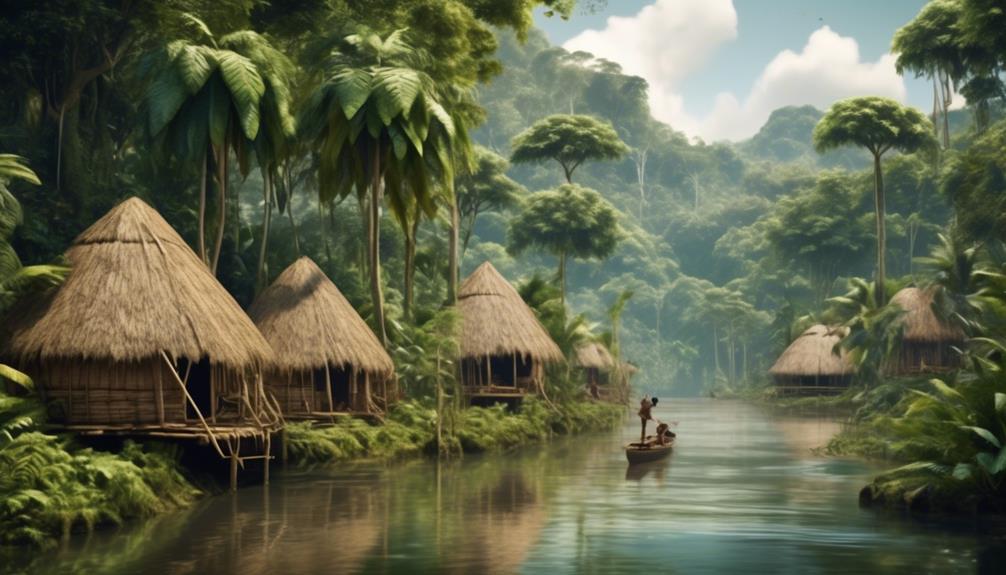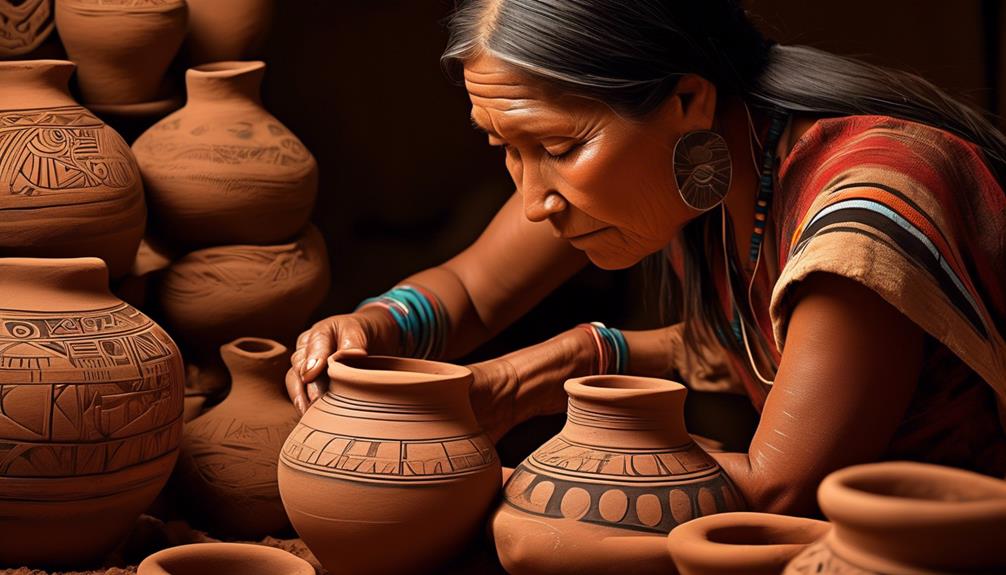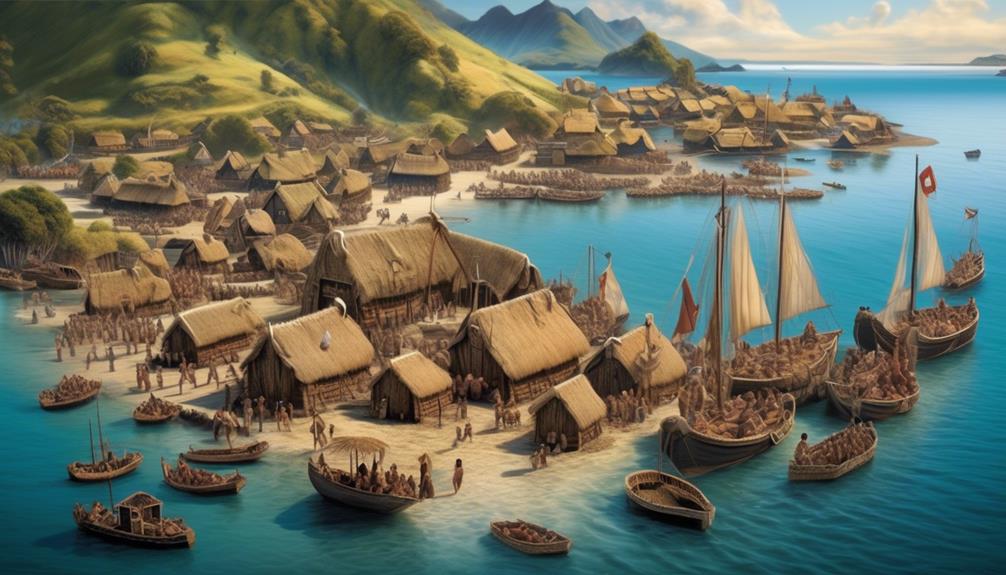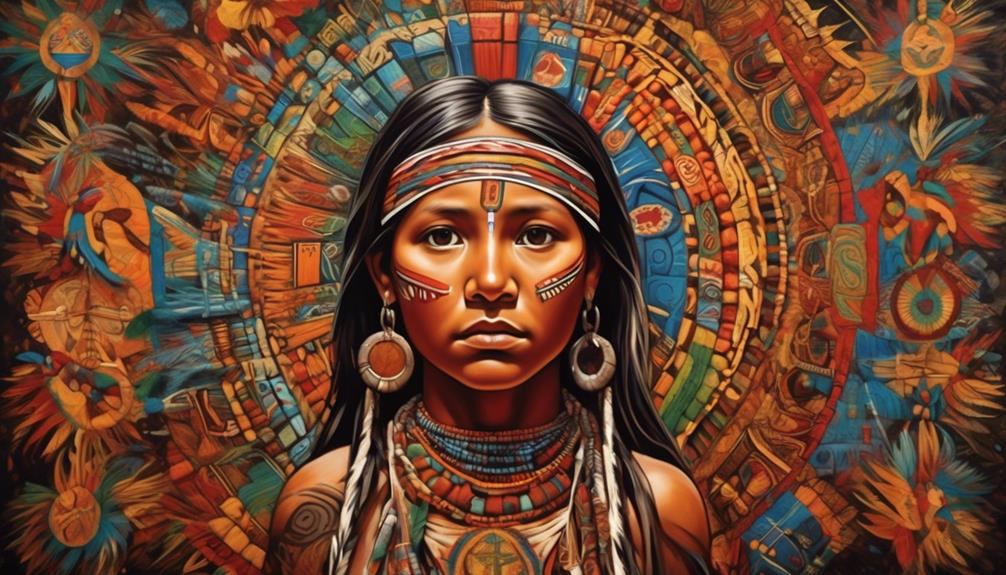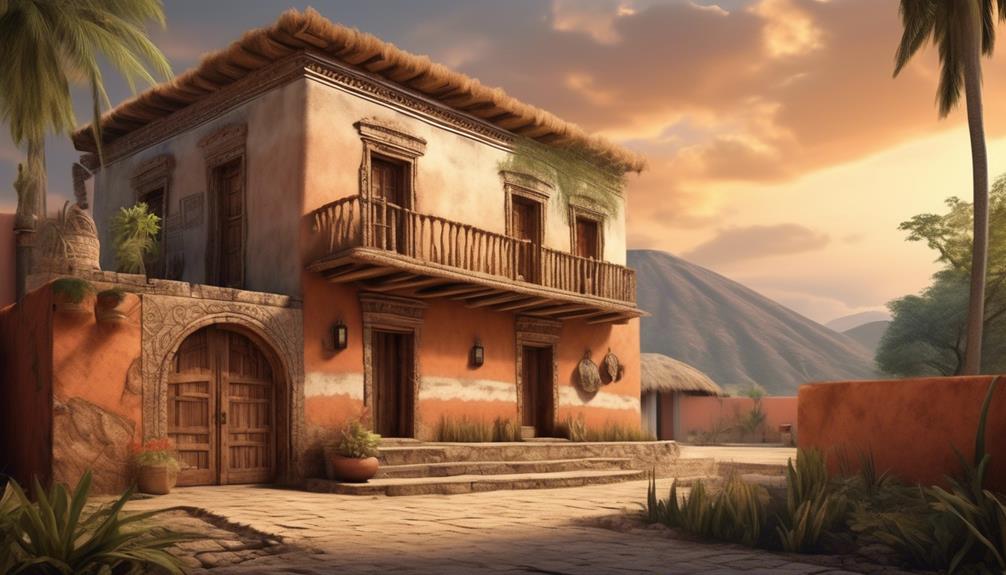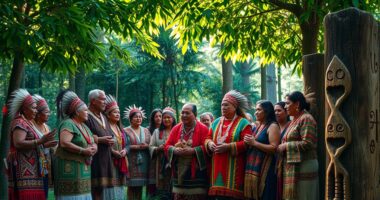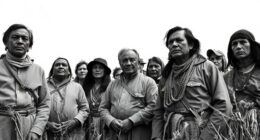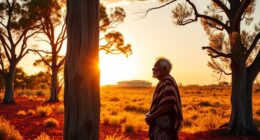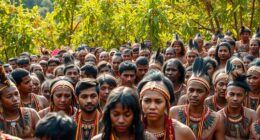Have you ever thought about the number of indigenous tribes that live in the Amazon Rainforest by any chance?
The Amazon Rainforest is not only the largest tropical rainforest in the world but also a place of incredible cultural diversity.
As we explore this topic, we will uncover the historical estimates of indigenous tribes, the current research shedding light on their populations, and the challenges these communities face in the face of modernization and environmental threats.
Stay with us as we uncover the importance of preserving these indigenous cultures and the initiatives that aim to support the Amazonian indigenous peoples.
Key Takeaways
- In the early 16th century, explorers and missionaries estimated hundreds of indigenous tribes in the Amazon rainforest, highlighting the cultural diversity and unique customs of each tribe.
- Research focuses on preserving the autonomy and cultural heritage of indigenous communities, including their traditional way of life, governance structures, and customary laws.
- Indigenous populations have deep knowledge about the rainforest, essential for conservation efforts, and their inclusion in policymaking is necessary for the future of the Amazon rainforest.
- Challenges facing Amazonian indigenous communities include deforestation, climate change, erosion of cultural identity and traditional knowledge, and the need for holistic approaches to balance cultural preservation and environmental sustainability.
Historical Estimates of Indigenous Tribes
In the early 16th century, explorers and missionaries estimated that there were hundreds of indigenous tribes scattered throughout the Amazon rainforest. These historical estimates reflect the incredible cultural diversity that has long characterized the region. The Amazon rainforest, a vast and richly diverse ecosystem, was home to a multitude of indigenous tribes, each with its own unique customs, languages, and traditions. These tribes formed a tapestry of human societies, adapting to the challenges and opportunities presented by the rainforest environment.
The historical estimates of the number of indigenous tribes in the Amazon rainforest serve as a testament to the complex and varied social landscape that existed prior to the extensive impact of European colonization. The sheer diversity of these tribes is a testament to the resilience and adaptability of indigenous cultures in the face of the rainforest's ecological demands. Moreover, these estimates underscore the significance of the Amazon rainforest as not only a natural wonder but also a cultural treasure trove, where countless distinct and vibrant societies once thrived in harmony with their environment.
Current Research on Indigenous Populations
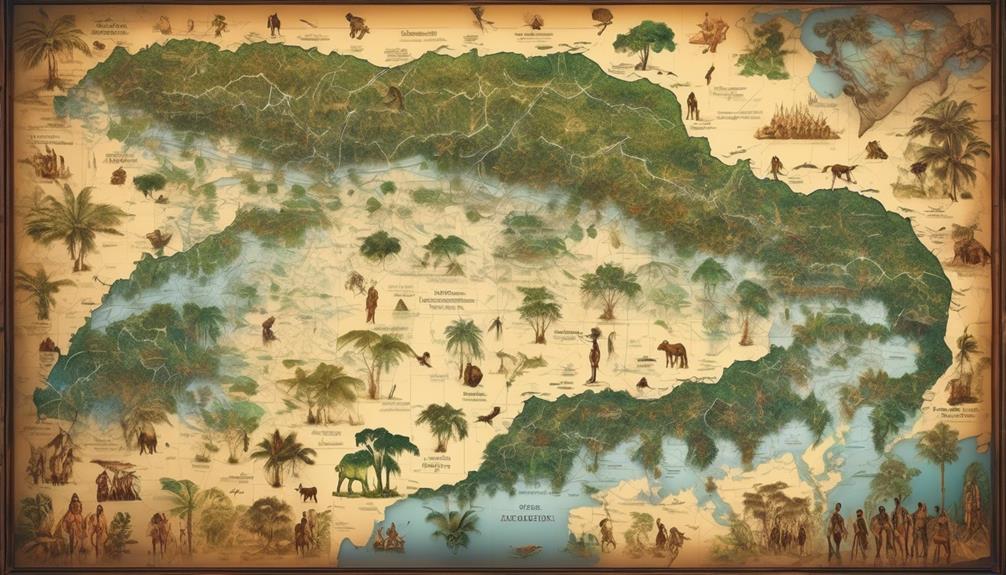
Researching current indigenous populations in the Amazon rainforest reveals a complex and dynamic tapestry of cultures and traditions that continue to adapt and thrive in the face of modern challenges. Indigenous rights have been a focal point of recent research, highlighting the importance of preserving the autonomy and cultural heritage of these communities.
Scholars have delved into the intricate dynamics of social integration within indigenous groups, examining how they navigate interactions with the outside world while maintaining their traditional way of life.
Current research emphasizes the need to understand and respect indigenous governance structures, decision-making processes, and customary laws. It aims to promote sustainable development that aligns with the values and aspirations of these communities, safeguarding their rights and territories.
The studies also shed light on the resilience of indigenous populations, their deep connection to the environment, and the profound knowledge they hold about the rainforest. This knowledge is crucial for conservation efforts and sustainable resource management, making the inclusion of indigenous perspectives in policymaking essential for the future of the Amazon rainforest and its inhabitants.
Challenges Facing Amazonian Indigenous Communities
As we explore the challenges facing Amazonian indigenous communities, it becomes evident that the preservation of their autonomy and cultural heritage, which was emphasized in recent research, is intricately linked to the obstacles they confront in the modern world. The delicate balance between cultural preservation and environmental sustainability presents a complex web of challenges for these communities. Here, we delve into the multifaceted issues that impact the lives of Amazonian indigenous tribes, from the encroachment of deforestation to the enculturation of modern societal norms.
| Challenges | Impact |
|---|---|
| Deforestation | Threatens traditional lands and resources |
| Climate Change | Alters natural habitats and traditional practices |
| Globalization | Erodes cultural identity and traditional knowledge |
The preservation of indigenous autonomy in the Amazon rainforest is under threat from various quarters. Deforestation not only infringes upon their ancestral lands but also disrupts the delicate balance of the ecosystem that sustains their traditional way of life. Climate change further compounds these challenges by altering the natural habitat and traditional practices, while the enculturation of modern society erodes cultural identity and traditional knowledge. These interconnected issues demand a holistic approach that respects the cultural heritage of these communities while ensuring the long-term environmental sustainability of the Amazon rainforest.
Importance of Preserving Indigenous Cultures
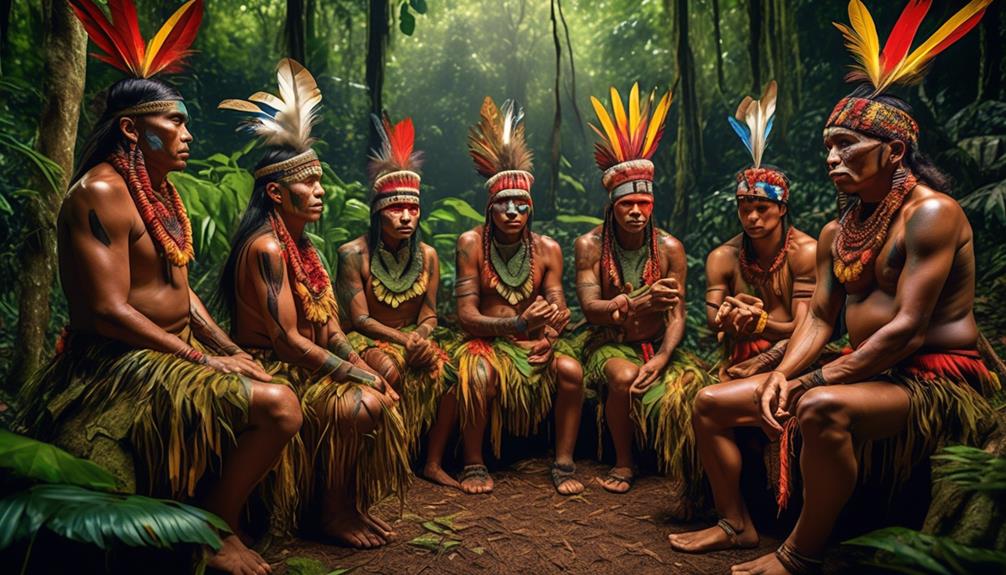
Preserving indigenous cultures is crucial for maintaining the rich tapestry of human heritage and traditions, ensuring the survival of invaluable knowledge and practices for future generations. Cultural diversity is a testament to the creativity and adaptability of human societies. Indigenous cultures offer a unique perspective on environmental stewardship, often possessing a deep understanding of sustainable living and natural resource management. Their knowledge of medicinal plants, agricultural techniques, and ecological balance is unparalleled and can offer valuable insights in our modern-day quest for environmental sustainability.
Preserving traditions isn't just about safeguarding historical customs; it's also about acknowledging the significance of indigenous knowledge preservation. Through their rituals, art, and oral traditions, indigenous communities pass down wisdom accumulated over centuries. These traditions aren't only valuable for their historical insights, but they also carry practical wisdom that's relevant to contemporary challenges.
Furthermore, cultural diversity enriches the global tapestry of human experience, fostering understanding and empathy across different societies. Therefore, the preservation of indigenous cultures isn't just a matter of historical significance; it's an essential part of shaping a sustainable and inclusive future for all.
Initiatives Supporting Amazonian Indigenous Peoples
Supporting the preservation of indigenous cultures, including those of the Amazonian tribes, involves fostering initiatives that empower these communities to uphold their traditions and protect their ancestral lands. Various organizations and governments have recognized the significance of cultural preservation and land rights for Amazonian indigenous peoples. Here is a table outlining a few key initiatives that support these communities:
| Initiative | Description |
|---|---|
| Land Titling Programs | These programs help indigenous communities secure legal rights to their ancestral lands. |
| Cultural Heritage Projects | Initiatives aimed at documenting and safeguarding the rich cultural heritage of Amazonian tribes. |
| Sustainable Development Projects | Projects focusing on economic activities that are environmentally friendly and culturally appropriate. |
| Advocacy for Indigenous Rights | Organizations advocating for the legal recognition and protection of indigenous rights and territories. |
| Education and Capacity Building | Programs that provide education and training to empower indigenous communities in defending their rights. |
These initiatives play a crucial role in supporting Amazonian indigenous peoples as they navigate the challenges of cultural preservation and land rights. By addressing these key areas, these initiatives contribute to the resilience and empowerment of these communities.
Frequently Asked Questions
What Are the Traditional Spiritual Beliefs and Practices of Amazonian Indigenous Tribes?
Traditional rituals, spiritual ceremonies, and healing practices are integral to the indigenous beliefs of Amazonian tribes. These practices are deeply rooted in their connection to nature and the spiritual world.
Various tribes have unique rituals and ceremonies, such as ayahuasca ceremonies, which are considered sacred for spiritual growth and healing.
The use of natural elements and spiritual guidance are central to these practices, demonstrating the rich and diverse spiritual traditions of Amazonian indigenous tribes.
How Do Indigenous Tribes in the Amazon Rainforest Communicate With Each Other and With the Outside World?
In the Amazon Rainforest, indigenous tribes communicate through various methods. This includes verbal language, storytelling, music, and traditional dances. These methods not only facilitate everyday interactions but also enable cultural exchange and preservation.
Communication with the outside world has evolved to include the use of modern technology. For example, radios and cell phones are now utilized by indigenous tribes. This technological advancement has allowed them to maintain their traditions while also engaging with the broader global community.
What Are Some Unique Cultural Traditions and Customs of Specific Amazonian Indigenous Tribes?
Unique rituals, traditional crafts, cultural ceremonies, and indigenous music are integral to the Amazonian indigenous tribes' way of life.
Their rituals, often involving intricate dances and symbolic attire, reflect a deep connection to nature.
Traditional crafts like pottery and basket weaving showcase their artistic prowess and cultural heritage.
Additionally, their vibrant cultural ceremonies and rich indigenous music are a testament to their strong sense of identity and community.
How Do Indigenous Tribes in the Amazon Rainforest Adapt to Modern Challenges While Maintaining Their Traditional Way of Life?
Adapting to modern challenges while preserving their traditional way of life, Amazonian indigenous tribes showcase a remarkable blend of traditional knowledge and modern solutions. They navigate environmental threats, encroachment on their land, and changing social dynamics.
Their cultural preservation is evident in their unique practices, beliefs, and languages, which continue to thrive amid the pressures of the modern world. Observing their resilience and resourcefulness provides valuable insights into the coexistence of tradition and adaptation.
What Are Some Examples of Successful Collaborations Between Indigenous Tribes and Outside Organizations for the Preservation of Indigenous Cultures in the Amazon Rainforest?
Successful partnerships between indigenous tribes and outside organizations have greatly contributed to indigenous preservation efforts in the Amazon Rainforest. Collaborative initiatives such as sustainable resource management projects and cultural exchange programs have fostered mutual respect and understanding.
These partnerships have also led to the documentation and preservation of traditional knowledge and practices, reinforcing the rich cultural heritage of indigenous communities. These efforts are crucial for maintaining the diversity and vitality of the Amazon's indigenous cultures.
Conclusion
In conclusion, it's fascinating to note that there are an estimated 350 indigenous tribes living in the Amazon rainforest, each with their own unique cultures and traditions.
It's crucial to support initiatives that aim to preserve and protect these communities, as they play a vital role in the rich cultural tapestry of the region.
The diversity and resilience of Amazonian indigenous peoples are a testament to the enduring strength of their way of life.
